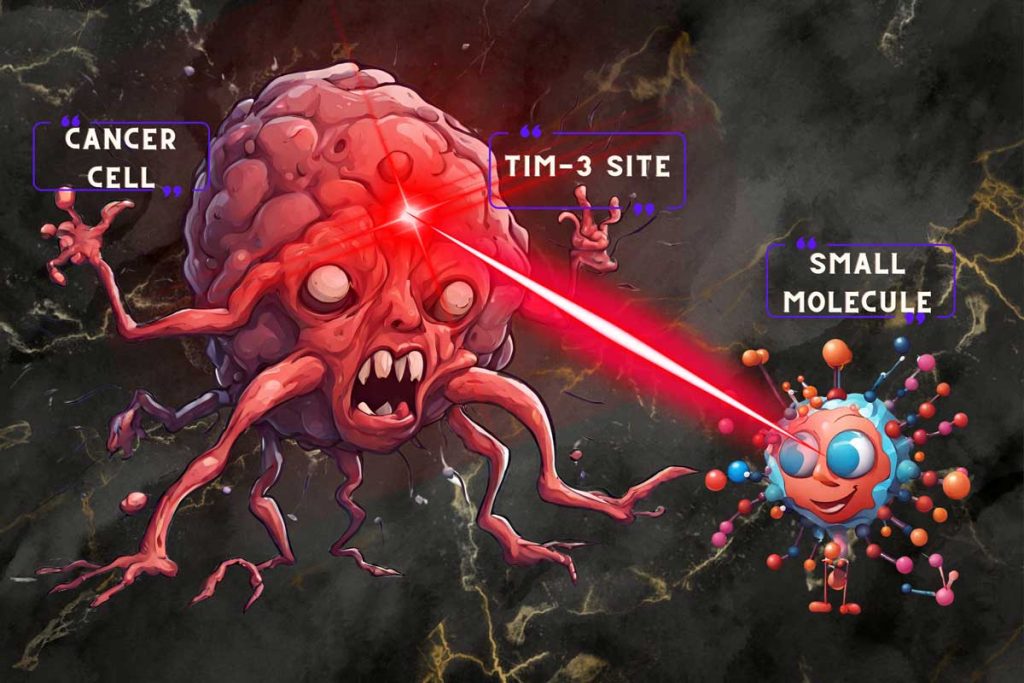Submission 2024
| Submitted by: | Ashira Manzoor |
| Department: | Pharmacy and Pharmaceutical Sciences |
| Faculty: | Pharmacy and Pharmaceutical Sciences |
My research focuses on developing novel small molecule drugs for TIM-3. TIM-3 is an immune checkpoint receptor that is expressed by various immune cells such as Cancer cells. We are expecting that small molecule inhibitors will offer novel treatment options for various diseases, including cancer. My image explains that small molecule drugs attack the cancer cell by binding to the TIM-3 and destroy them.
Was your image created using Generative AI?
Yes.
Which model of generative AI did you use?
Canvas.
How was your image created?
The creation process began by setting a somber tone, blending elements of horror and warfare to depict the battle against cancer and the role of the Tim-3 binding site in combating it. A dark, foreboding background was crafted on canvas, adorned with textures evocative of conflict and struggle. Using the Magic Media tool in Canva, a cancer cell was meticulously designed, its ferocious roar symbolizing the resistance faced from small ligand molecules attached to the TIM-3 site. Similarly, a small molecule was fashioned, representing the antagonist in this narrative. Careful adjustments in color, size, and orientation ensured cohesion between the two images, seamlessly weaving them into a singular visual story. Finally, beams of light, sourced from Canva’s elements, were strategically placed to signify the binding medium, illuminating the path towards understanding and combatting cancer at its molecular level.
How did you craft your prompt to guide the generative AI in creating your image? Please describe the technique or approach you used to convey your vision to the AI.
The creation process began by setting a somber tone, blending elements of horror and warfare to depict the battle against cancer and the role of the Tim-3 binding site in combating it. A dark, foreboding background was crafted on canvas, adorned with textures evocative of conflict and struggle. Using the Magic Media tool in Canva, a cancer cell was meticulously designed, its ferocious roar symbolizing the resistance faced from small ligand molecules attached to the TIM-3 site. Similarly, a small molecule was fashioned, representing the antagonist in this narrative. Careful adjustments in color, size, and orientation ensured cohesion between the two images, seamlessly weaving them into a singular visual story. Finally, beams of light, sourced from Canva’s elements, were strategically placed to signify the binding medium, illuminating the path towards understanding and combatting cancer at its molecular level.

